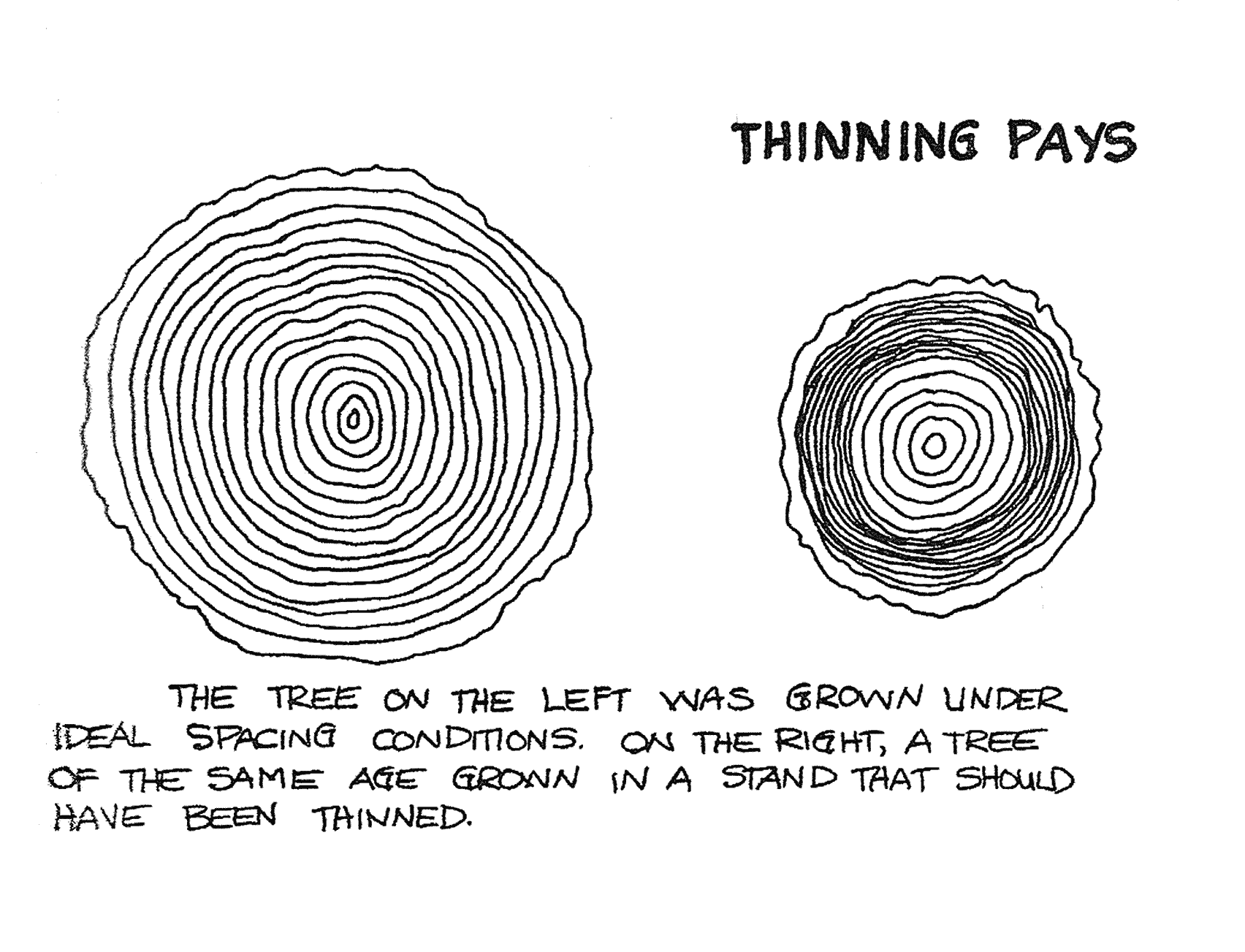Why Thinning Trees Can Help
Thinning can improve a forest in a number of ways:
- Spacing can be improved. This brings the number of trees closer to a quantity prescribed by a forester to be just right for the kind of trees being grown and the soil on which they are growing. This, in turn, concentrates growth on future crop trees.
- Trees that are less crowded add growth faster. Also, through greater vigor they are more likely to fend off insect or disease attacks.
- Less desirable species can be removed as well as trees with deformed trunks or other undesirable characteristics.
- Opening the understory prevents or slows the spread of wildfires and keeps flames close to the ground.
- Trees removed during the thinning may provide economic returns from the forest early in the life of the stand. For example, sometimes markets exist for posts or fuelwood.
- When stems are removed before they are large enough to sell, or when a market does not exist, it is called a precommercial thinning. The benefits are long term, but the activity itself may be a labor of love. It can provide good exercise and a family activity while benefiting the forest.
There are many ways to thin a forest, so the advice of a professional forester and a plan should always precede action.

Always Start with a Plan
Planning is never the most exciting part of any venture, but a forest management plan is the very best first step any woodland owner can take. There is even help available and sometimes financial incentives. In most areas of the country there are service foresters that can help you develop a plan. Contact:
- Your state forester’s office
- Natural Resources Conservation Service
- Consulting foresters
Plans vary depending on size and nature of the property. However, here are the components that are generally included:
- A description of the property
- Your goals, e.g. to supplement income and/or make the land into a sound financial investment, improve wildlife habitat, have a place for family recreation, etc.
- A map of forest types, changes in soil characteristics, open fields, bodies of water, topography and other natural features, roads and buildings.
- Inventory data. This includes the species present, sizes, condition, and things of special interest such as den trees for wildlife, berry patches, etc.
- Any special problems such as boundary disputes, easements, limitations.
- Management recommendations. Based on the facts of your property, your goals, and the best scientific knowledge, these recommendations will include such things as where thinning or improvement cutting is needed, how to get rid of invasive or undesirable species, the quantity and quality of products might be economically marketed, how to reduce fire danger, and how to regenerate the forest so it is truly sustainable.
